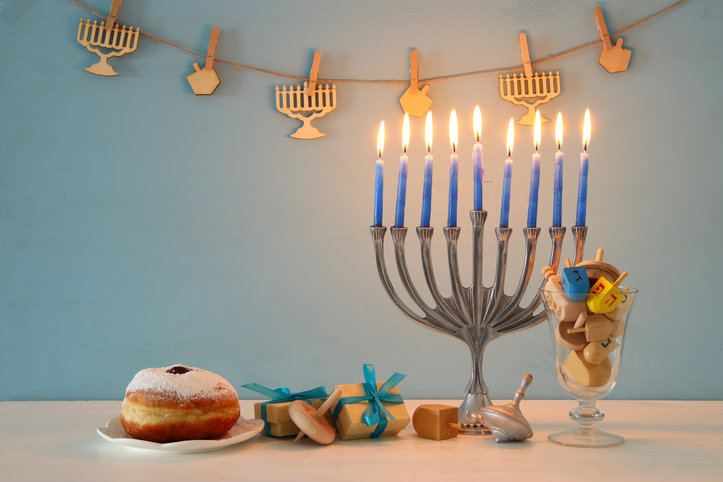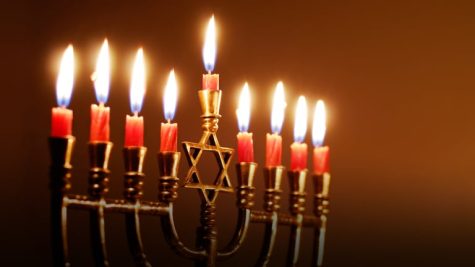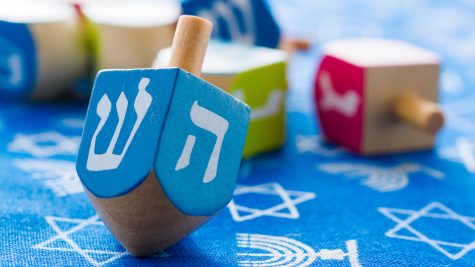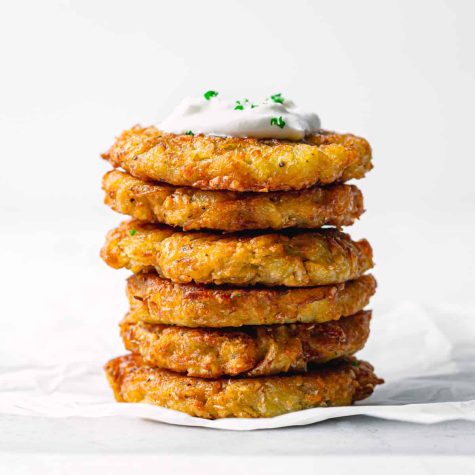The True History of Hanukkah
image of jewish holiday Hanukkah background with traditional spinnig top, menorah (traditional candelabra) and burning candles
Hanukkah, Chanukah, or Hannukah, however you would like to spell it, is a Jewish festival which falls this year from the evening of Sunday, December 18 to the evening of Monday, December 26th. But besides the classic dreidels and menorahs, many do not know about the traditions, or true history, of this special eight-day-long celebration.
Hanukkah means “dedication” in Hebrew, and was chosen as the name for this celebration because the holiday commemorates the rededication of the Second Temple in Jerusalem.
But first, we have to start at the beginning, way back around 200 B.C., when Judea – current day Israel and the homeland of the Jewish people – was conquered by the Seleucids (Greeks ruling from Syria.) The Syrian-Greeks outlawed Jewish religion and forced Jews to assimilate to their Hellenistic culture. The Jewish people tried to maintain their heritage and religion, but faced cruelty and danger for continuing with their customs.
In the town of Modiin, near Jerusalem, a man named Mattitiyahu was a leader of the Jewish people. He and his sons refused to obey the commands of the Seleucids, and were forced to flee into the mountains. Other Jews joined them, becoming a band of Jewish freedom fighters called the Maccabees. The Maccabees led a guerilla war to free their nation, and successfully drove their enemies out of Jerusalem. When they were gone, around 165 B.C.E., the Jewish people succeeded in retaking, and rededicating, their temple.
This temple was called The Second Temple. The First Temple was built in Jerusalem and completed around 957 BCE, but was later destroyed by Nebuchadrezzar II of Babylonia around 587 BCE (remember that time is counted backwards Before the Common Era). In 538 BCE, Cyrus II, conquerer of Babylonia, allowed exiled Jews to return to Jerusalem and rebuild the Temple. The Second Temple was completed in 515 BCE, and became the center of Israelite life, serving as a gathering place for Jews, a place for religious rituals, a meeting place for the Sanhedrin (the highest court of Jewish law), and a repository for Jewish literature.
To their horror, when the Maccabees reclaimed their special temple, they discovered that the soldiers had desecrated their holy site. There was only one remaining jar of oil to keep the menorah lit. A menorah is a golden candelabrum whose seven branches represent knowledge and creation and are meant to continue burning every night; as a critical part of Jewish religion, it would have been sacrilegious to let the flame die.
This was when the Hanukkah Miracle occured. Though there was not enough oil to keep the candles burning for a single day, the flames miraculously flickered for eight night until more oil arrived. This event, seen as a miracle from God, inspired the the festival of lights, or Hanukkah, and explains why the holiday is celebrated for eight days every year.
Traditions
There are many common traditions during Hanukkah, but perhaps the most prominent is lighting eight candles to symbolize the menorah which stayed lit in The Second Temple. However, the candelabra which is lit on Hannukah is actually not called a menorah. The word menorah refers to an every-day candelabra or lamp, the type which was kept lit every day in the Holy Temples. A hanukkiah is a type of menorah which is used specifically during Hanukkah. Hanukkiahs have nine branches instead of seven – eight branches to hold eight candles which represent the eight nights, as well as a ninth on a separate level, the shammash, which is used to light the other candles.
Another common tradition during Hanukkah is to play with little spinning tops called dreidels. While many believe dreidel is a Hebrew world, the word “dreidel” is actually Yiddish; the Hebrew word for dreidel is “sevivon.” The four-sided dreidel has a Hebrew letter on each side: nun, gimmel, hey, and shin, which stand for a Hebrew phrase, “nes gadol haya sham” or “a great miracle happened there.” Fun fact: in Israel, dreidels say, nun, gimmel, hey, pey, which means “a great miracle happened here.” It is believed that the Jewish people played with dreidels originally in order to fool the Greeks, who would think they were playing a harmless game, while in reality they were secretly studying the Torah. The game could also have been inspired by different cultures and traditions from around Europe.
Food
Traditional Hanukkah foods are fried in oil as an allusion to the Hanukkah miracle. These foods include latkes, which are potato pancakes fried in oil, and sufganiyot, which are jam-filled donuts.
Of course, we have to discuss gelt – chocolate coins given to Jewish children on Hanukkah, which are often used in the game of dreidel. This tradition comes from the Hasmoneans, descendants of the Maccabees, who later ruled Judea and issued coins – which symbolized the political autonomy that the Jews had fought for against the Greeks. Since then, coins have been a traditional part of Hanukkah. It was only in the 1920s that American candy companies introduced chocolate coins, perhaps inspired by chocolate coins called geld which the Dutch gave out to celebrate the birthday of Saint Nicholas. 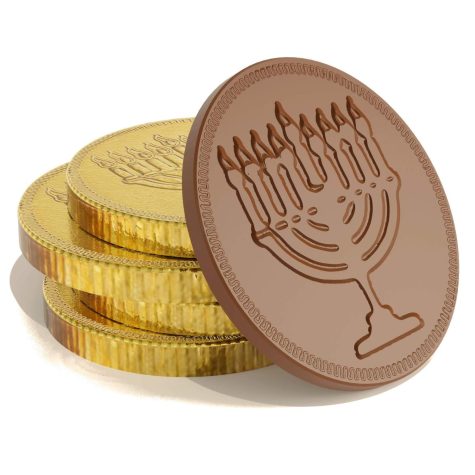
The holiday of Hanukkah that we recognize today is largely Americanized, from chocolate gelt to the presents distributed. However, this celebration is an important part of Jewish culture, and an important way to remember the struggles and victories of Jews throughout history. Hanukkah is more than an eight-day festival of lights, it is an ancient tradition, a celebration of victory, strength, and religious and political freedom.
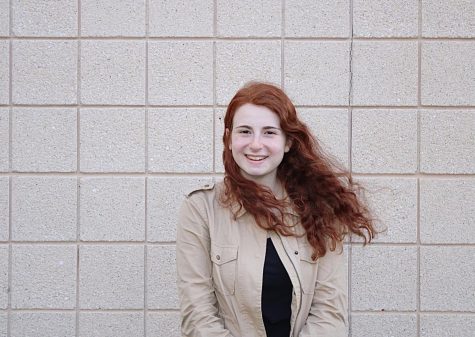
Jenna, an IB senior, is so excited for her fourth and final year at The Harriton Banner, this year as Executive Editor. Along with writing articles, Jenna...


